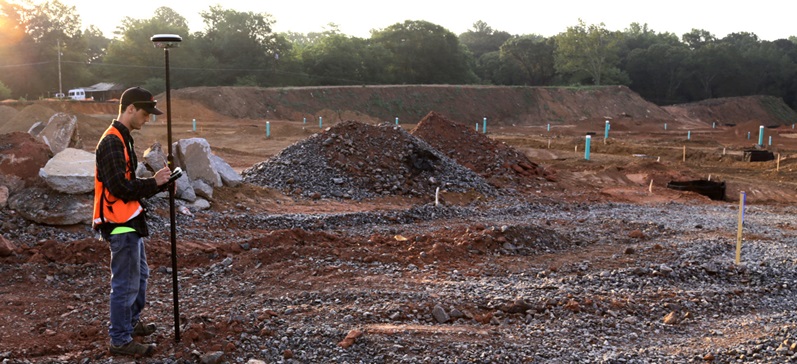Force Multiplier: Why GNSS networks are gaining ground in construction

HxGN SmartNet and construction
As contractors seek increased efficiency and productivity, many are replacing base stations with correction service subscriptions and reaping the benefits.
Ready to get started?
Author: David Rowlett
John Hugerich still remembers using a base station and setting up a local network for every stockpile calculation and flood elevation. The process was tedious and time-consuming, and the project manager of Hugerich Construction, based in New Jersey, USA, often wished for a faster and easier way to get the job done.
That was two years ago. Today, Hugerich relies almost exclusively on the HxGN SmartNet network for tasks requiring RTK corrections.
“It allows you to get your correction data and all of your state plane coordinates right there, so it makes life a lot easier,” he says. “Just being able to run out to a jobsite and get a quick stockpile quantity or double check an existing elevation for estimates has been a really big help in bidding jobs and completing jobs on time and on budget.”
Hugerich isn’t alone. As contractors seek ways to become more efficient and productive, an increasing number of companies are replacing some of their base stations with network subscriptions—and reaping the benefits of this approach.

How Network RTK Corrections Work
Surveyors have long used GNSS networks to save time and money as well as remove potential sources of error. One method involves hauling around two GNSS receivers (a base and a rover), a lot of batteries and cables, two radios, a tripod and a pole, and setting up a local base for each project.
However with RTK corrections, network users simply carry a GNSS receiver (rover) with a mobile internet source and use that equipment to quickly access a network of permanent reference stations. The combined data from those permanent stations is used to generate RTK corrections and provide accurate positioning at much greater distances than normally possible.
Using a network saves time since it precludes the setup of separate base stations, and it avoids the risk of having control fail due to a damaged or stolen base. It also eliminates potential errors from incorrect setups or having to replace the base station if it gets bumped or knocked down in the course of a project. For contractors, it provides the ability to go to a job they’re preparing to bid, perhaps while their base is in use elsewhere, and quickly check elevations and quantities to protect profit margins.
Increased Accessibility, Reliability and Efficiency
In the past, having access to a reliable, precise network on a construction site was not a given. Contractors using GNSS were almost always forced to set up their own local base stations to ensure accuracy. Over the last few years, however, substantial technology investments by the networks, along with an increase in service capabilities, have made networks an attractive alternative for contractors seeking to take their productivity to the next level.
For example, HxGN SmartNet in North America provides a reliable and widespread RTK correction network that is consistently and rapidly expanding in the USA and Canada. The increased availability combined with the benefits of using a network is driving construction contractors to sign up for subscriptions in record numbers. For most contractors, it’s the simplicity and speed of the network that is the most appealing.
“I can hand a receiver to one of my operators and give him a quick tutorial on what he needs to do, and then go back to the office,” says Hugerich. “Once he’s onsite and gives me his coordinates, I can double check remotely to make sure everyone is on the same coordinates and that everything is running the way it should be. Ease of use is a really big thing.”
Micah Sawyer of Chase Excavating in Maine, USA agrees, noting that using HxGN SmartNet has streamlined layout for his company. “It’s fast and easy, and it makes us more productive on our jobs,” he says.

Partnership Approach Helps Ensure Success
Advances in how networks serve the construction market are also contributing to the rise in network subscriptions. For example, base stations are still required for most machine control finishing operations to ensure vertical accuracy. HxGN SmartNet, however, offers a convenient site licensing option that allows contractors to purchase a single license for multiple rovers and machines on a project.
With each site license, the service works closely with the contractor to densify the network so that the accuracies needed by machine control are achieved. The savings from not having to purchase a base station and repeaters provide a significant advantage. The larger the project, the greater the gains in efficiency.
Overall, the benefits of network subscriptions combined with the quality of service are leading to increased confidence and widespread adoption by contractors.
“The increased efficiency of using a network really makes this the next logical step in construction,” Sawyer says.
A version of this story first appeared in xyHt.